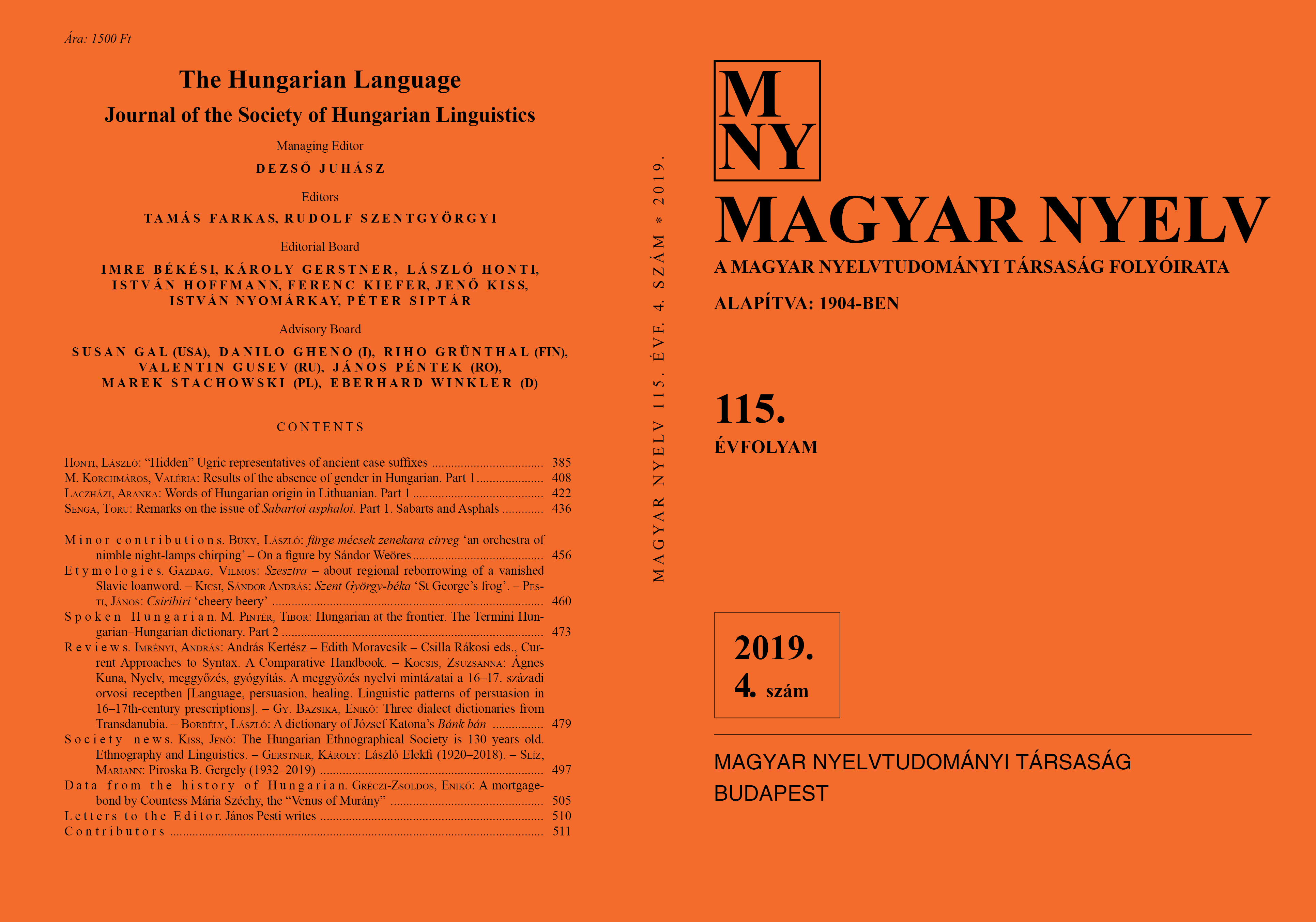Hungarian at the frontier
The Termini Hungarian–Hungarian dictionary. Part 2
DOI:
https://doi.org/10.18349/MagyarNyelv.2019.4.473Keywords:
Hungarian–Hungarian dictionary, Termini, lexicography, contact varieties of HungarianAbstract
The study of varieties of Hungarian spoken beyond the state borders goes back to several decades now. One tool of research, especially that of the word stock of those varieties, is the Termini Hungarian–Hungarian dictionary edited and published by the Termini Research Network of the Hungarian Language and listing specific lexical items of contact varieties of Hungarian in the Carpathian Basin (at the moment, almost 5000 entries). The paper presents sample entries to represent the structure and principles of operation of that special dictionary and reveals the editorial principles that have led to the construction of the dictionary and the makeup of the individual entries.
Downloads
Published
Issue
Section
License
Copyright (c) 2024 Tibor M. Pintér

This work is licensed under a Creative Commons Attribution-NonCommercial-NoDerivatives 4.0 International License.
Magyar Nyelv is a Diamond Open Access periodical. Documents can be freely downloaded and duplicated in an electronic format, and can be used unchanged and with due reference to the original source. Such use must not serve commercial purposes. In the case of any form of dissemination and use, Hungarian Copyright Act LXXVI/1999 and related laws are to be observed. The electronic version of the journal is subject to the regulations of CC BY-NC-ND (Creative Commons – Attribution-NonCommercial-NoDerivatives).
The journal permits its authors, at no cost and without any temporal limitation, to make pre-print copies of their manuscripts publicly available via email or in their own homepage or that of their institution, or in either closed or free-for-all repositories of their institutions/universities, or other non-profit websites, in the form accepted by the journal editor for publication and even containing amendments on the basis of reviewers’ comments. When the authors publicize their papers in this manner, they have to warn their readers that the manuscript at hand is not the final published version of the work. Once the paper has been published in a printed or online form, the authors are allowed (and advised) to use that (post-print) version for the above purposes. In that case, they have to indicate the exact location and other data of the journal publication. The authors retain the copyright of their papers; however, in the case of an occasional secondary publication, the bibliographical data of the first publication have to be included.



